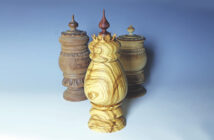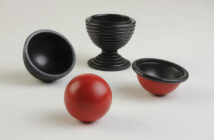In My Workshop with Juergen Heid
We go into the workshop with German woodturner Juergen Heid
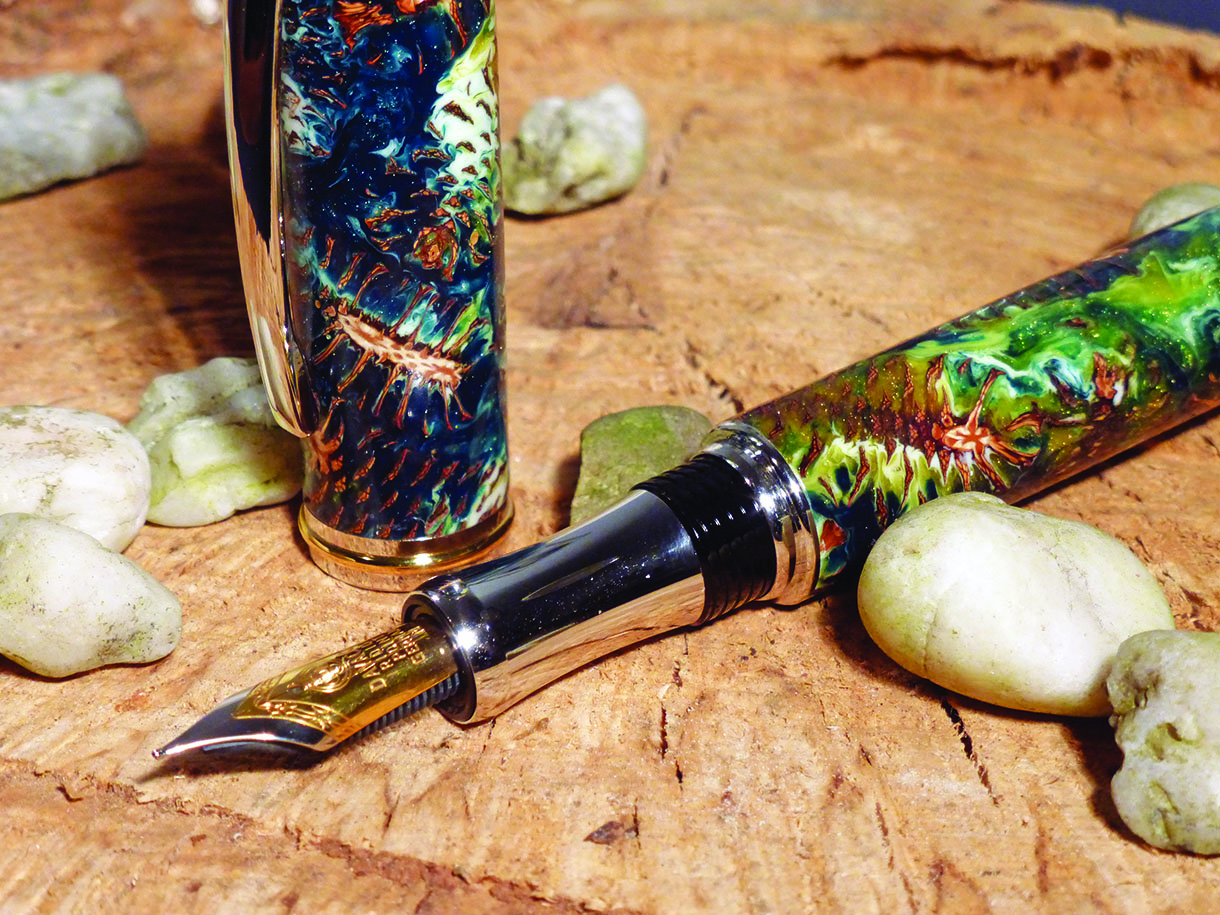
We go into the workshop with German woodturner Juergen Heid
In 1984 Juergen started an apprenticeship as a cabinetmaker, but this finished after three years and unfortunately, he decided to stop woodworking. Luckily, Juergen’s best friend convinced him to become a master of cabinetmaking and so he trained for a further two and a half years. Having finished training, Juergen wasn’t yet 24 years old, so he wasn’t able to trainpeople himself. Following this, Juergen worked in a kitchen store for 10 years, designing and planning kitchens. Over the years at the kitchen store, woodturning took a backseat. Juergen soon bought his own shop, but this closed seven years later. It was at this point that he remembered his love for woodworking. Juergen then went on to work for two years in joinery, then moving on to training young handicapped people, with autism, physical and learning disabilities.
WT: Tell us about your background
JH: While in my apprenticeship I bought my first lathe. I start woodturning, trying different things to build. After my time at the kitchen store my passion woke up again, but I didn’t have the lathe anymore. I decided to buy a cheap lathe, because I wanted to do only a little woodturning. I soon saw it wasn’t the right lathe for me and decided to invest in one from Killinger. A Killinger 1400 SE is everything I need! It was the best investment I ever made. I saw pens made from wood and I thought this is what I want to create. I went to
a further education course by Hans Schulte Drechselshop with Horst Pieper for one day. This was enough for me to go my own way
WT: How did you get into woodturning?
JH: In school I saw a round piece of wood, bigger at the ends than in the middle and in the middle there was a ring. I wondered how can this can be made and I decided to try it out
WT: Describe your turning style and the types of work you produce
JH: Most pen makers want to show the unbelievable shapes they can create. For me this is ugly. At home I go in my workshop to try out what I can do. I don’t want to show which shape I can make, I want the wood/material and the pen kits to speak for themselves. So the shape is simple, but exact. After making a few pens in wood, I began searching for other materials to use. I found materials like multiplex in all different cuts, buffalo horn, soapstone, cholla cactus and hybrid pen blanks made from mallee burl, mini cones and so on. Also I pay close attention to the exactness and the finish.
When making pens from the cholla cactus wood, it’s only dried and not stabilised. I trill it, glue the messing in, turn it and just before I’m finished with turning, I put the coloured stones with glue in it and then the work begins. I start sanding with 80 grit, ending with 1,000 grit, before I put the finish with cyanoacrylate on it. This takes a lot of time and makes the pen very expensive. But the result is unique and the look is unbelievable

Jürgen Heid at his lathe, testing if the parts fit exactly together
WT: What inspires you?
JH: All of my finished pens: they are all my babies and I don’t want to sell them, but I do so
I can make more. For me, it’s like an obsession. To make pens gives me the quiet and power I need. I’m glad I found my way back to my roots
WT: Who or what has been your greatest influence?
JH: My wonderful wife gave me all my influence because she gave me all the freedom I need and she is the best adviser I can ever have
WT: Tell us about your workshop
JH: I have a small workshop which is about 25m sq. There I have all the machines I need: my Killinger 1400 SE, a Wood Rat, all electric hand tools like upper mill, a bandsaw, cutting saw and a wet sharpening machine. I try to make things with minimal expenses and equipment, but with the best I can get.
My timber yard is separate, in another room which is dry and warm, so I constantly can use good dried wood for making the fine pens
WT: Where do you see yourself heading?
JH: I want to be more and more self-sufficient and to try using more materials without any financial risk
WT: What have been the highs and lows of your career so far?
JH: The high in my career is to have had the opportunity to start again with woodturning, after so many years. The low was to find the way back into it, which was full of bumps
in the road but without this, I never could enjoy where I am now
WT: What is the best thing about turning?
JH: You get the chance to go into yourself and become one with the piece of wood and the lathe. It gives me the quiet and the power I need in this fast running world
WT: What methods of promotion do you use?
JH: My biggest promotion by far is through personal recommendation. After this, I try to use profiling in magazines and on the internet. Most of the time the groups of pens I make sell out just after I’ve finished them and so you don’t see them too much on my homepage
WT: What are your aims and aspirations for the future?
JH: To find more time for woodturning, building a complete package with a box and a place to keep the pens. I like people to value my work and for it to make them happy
WT: Typically, how long does it take you to complete one of your pieces?
JH: Normally, I make a set of 10 to 15 pens in one go. I spend most of my time finding out which wood goes with which pen kit. Then I start to sign them, cut them, trill them, turn them, sand them, put the finish on and marry them. This takes around two weeks, working every evening for two or three hours and most of the weekend. If I’m doing contract work, it takes about five to six hours, without the finish drying time
WT: What special tools in your workshop could you not do without?
JH: I can’t do without my Killinger lathe, my wet sharpening machine and the Henry Taylor Working tools
WT: Can you tell us a bit about a typical day in your life?
JH: In the morning I wake up at 5 o’clock and go to work. When I come home from work, I go down in the basement where my workshop is and start woodturning for two or three hours. I also need my free days. Once my wife comes back from work, we cook together and talk about the day, what happened and the ideas we’ve had. After a time without woodturning, I want to turn. So I start again
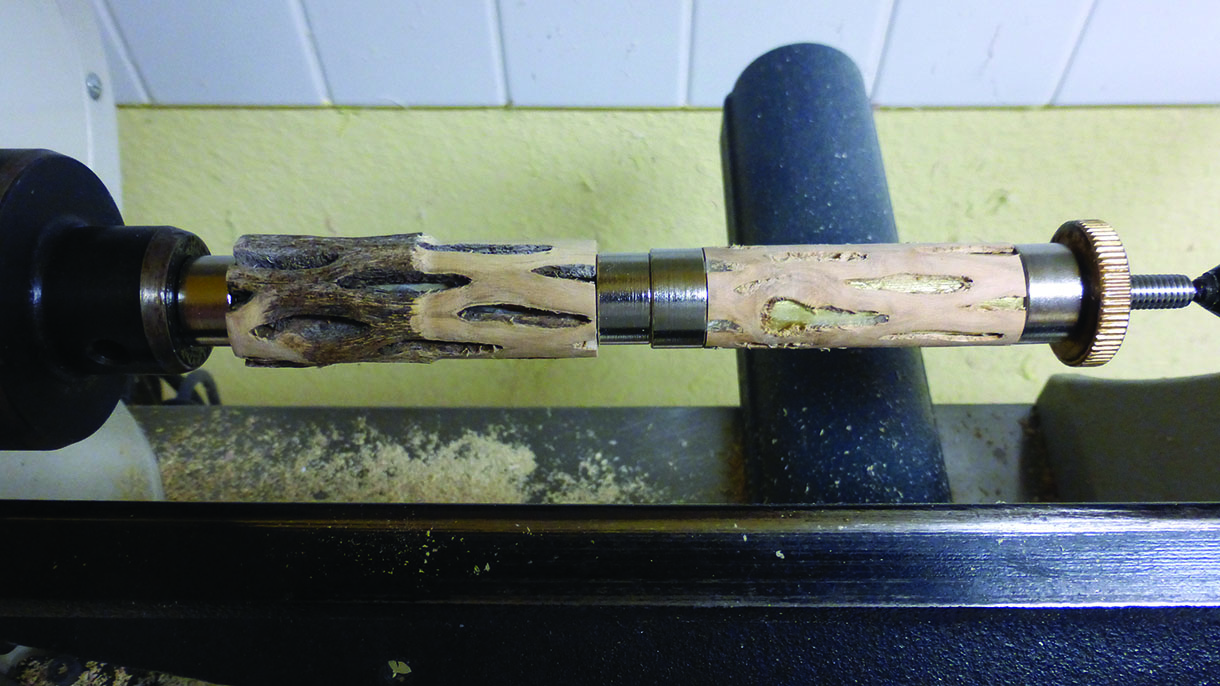
Starting to turn cholla cactus wood: small turquoise stones will be later glued into the holes
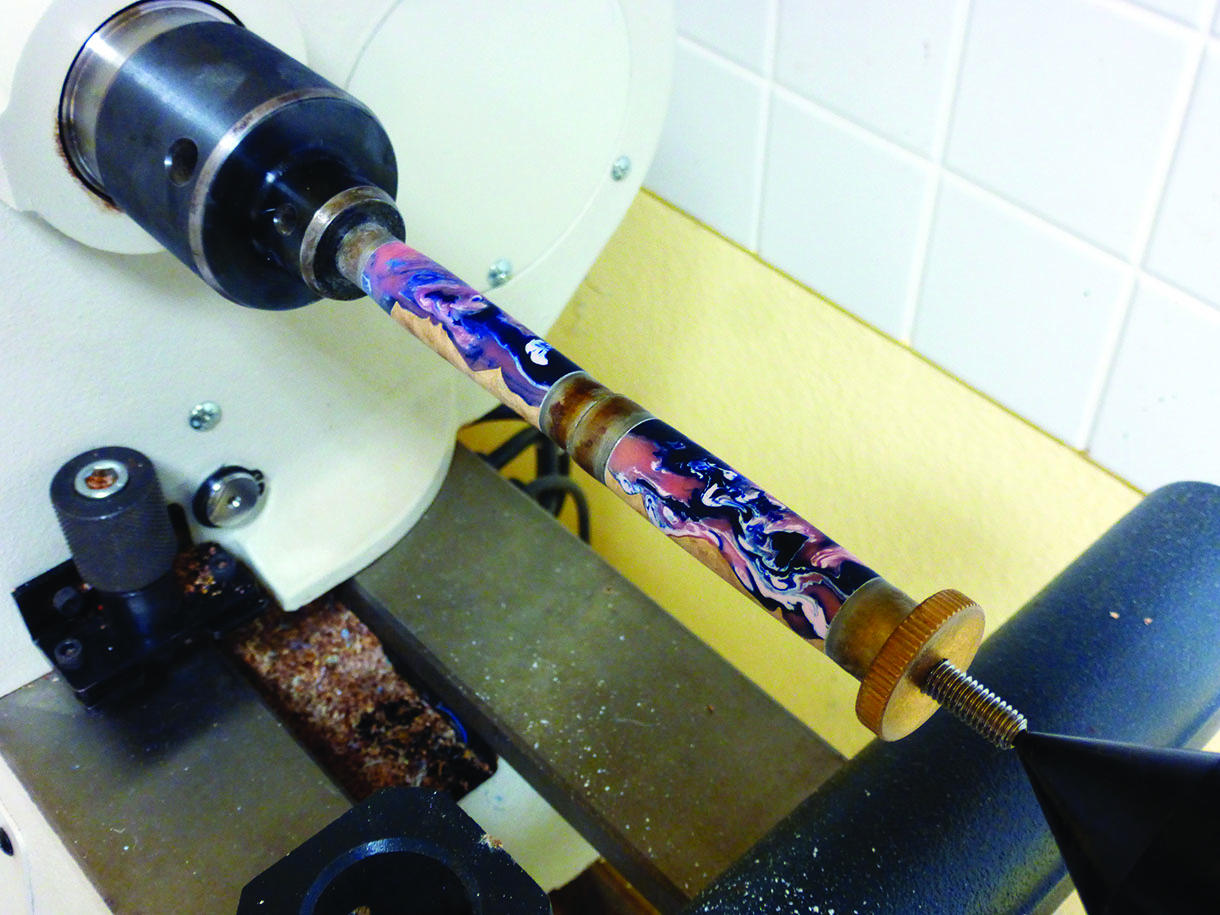
Turning a hybrid pen blank from red mallee burl with blue, white and red resin

Statesman pen kit with cocobolo wood
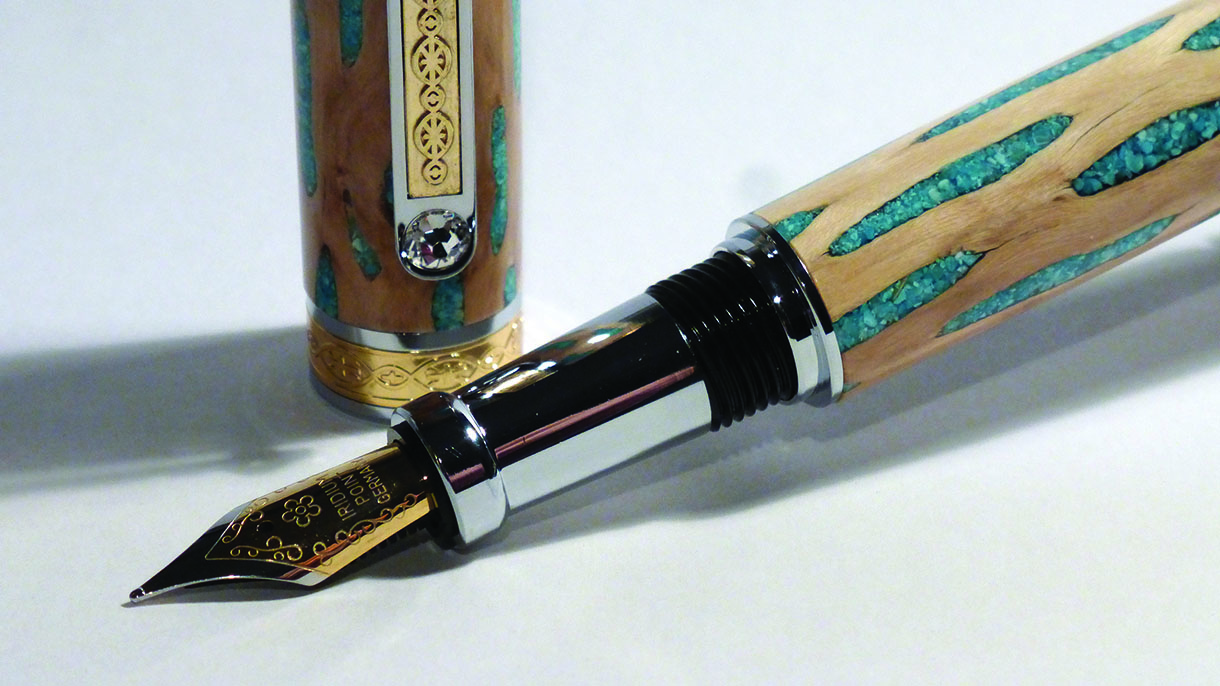
Finished pen made with cholla cactus wood and turquoise stones
Likes
• My Killinger
• Finding the time to go in my workshop
• Working with new materials
• Creating new things
• Seeing the result of my work
Dislikes
• Bad tools
• Not having enough time for woodturning
• Sanding
• Selling my pens
Handy hints
• Get creative, by turning pens in all kinds of materials
• Take the time and make it exact. The results will be unbelievable

